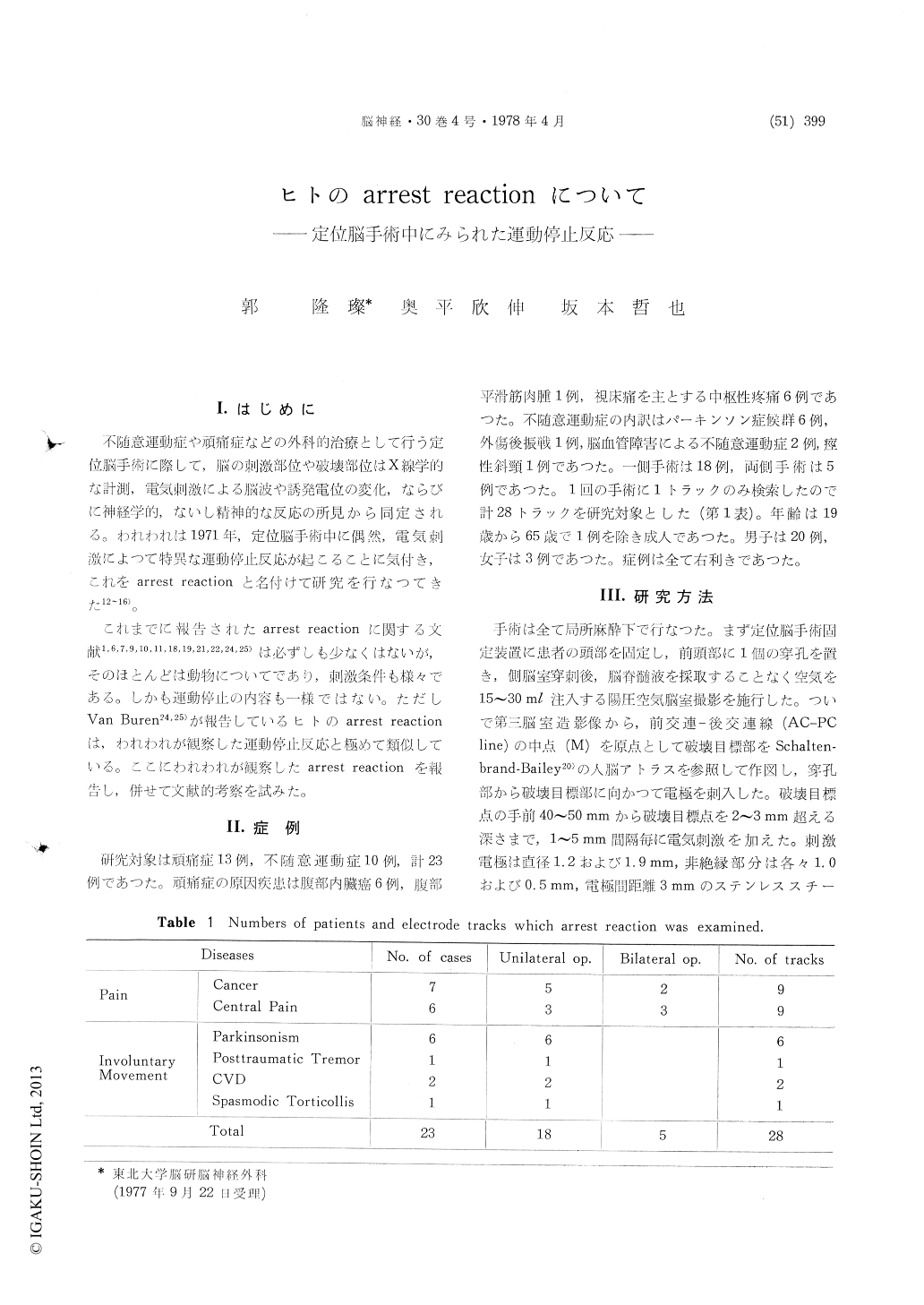Japanese
English
- 有料閲覧
- Abstract 文献概要
- 1ページ目 Look Inside
I.はじめに
不随意運動症や頑痛症などの外科的治療として行う定位脳手術に際して,脳の刺激部位や破壊部位はX線学的な計測,電気刺激による脳波や誘発電位の変化,ならびに神経学的,ないし精神的な反応の所見から同定される。われわれは1971年,定位脳手術中に偶然,電気刺激によつて特異な運動停止反応が起こることに気付き,これをarrest reactionと名付けて研究を行なつてきた12〜16)。
これまでに報告されたarrest reactionに関する文献1,6,7,9,10,11,18,19,21,22,24,25)は必ずしも少なくはないが,そのほとんどは動物についてであり,刺激条件も様々である。しかも運動停止の内容も一様ではない。ただしVan Buren24,25)が報告しているヒトのarrest reactionは,われわれが観察した運動停止反応と極めて類似している。ここにわれわれが観察したarrest reactionを報告し,併せて文献的考察を試みた。
In spite of many reports of arrest reaction in animals, there are very few reports in man. During a therapeutic stereotaxic operation we observed peculiar phenomena caused by electrical stimulation to the deep structure of the cerebrum. This phenomenon is quite similar to that reported by Van Buren, but there are a few differences between them. Arrest reaction was observed in 14 of 23 cases, 17 of 28 tracks. Stimuli which caused the arrest reaction were 60-100Hz square waves of,1 msec duration and 5-15V.
The electrical stimulation caused an interruption of counting and other motor actions, which could be resumed following release of stimuli. Psychic confusion or memory disturbances were not ob-served with the exception of a few cases.
The arrest reaction that we observed is thought to be due to a direct effect on the head of the caudate nucleus, not due to secondary effects on the internal capsule and the motor fiber in the vicinity of the caudate nucleus. However, the possibility that the current spread to the motor fiber cannot be definitely ruled out.

Copyright © 1978, Igaku-Shoin Ltd. All rights reserved.


